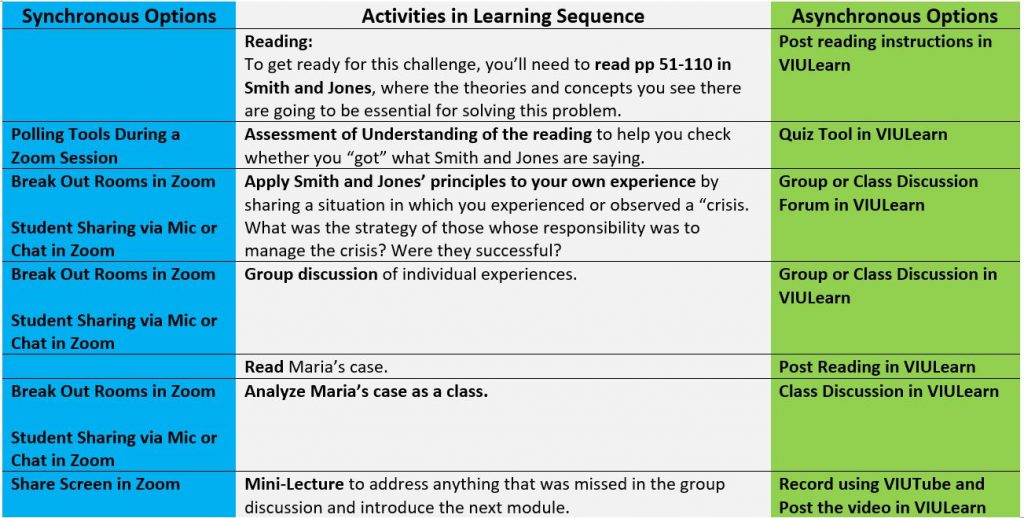As we continue to live in the world of Alternative Delivery, we are often asked “how much of my online course should be synchronous and how much should be asynchronous?”. There is no magic ratio that will work for every course and every instructor. The approach that we recommend is to think about what your course would look like in a fully asynchronous format and then pick the places where synchronous delivery would fit well. Our reason for this is that asynchronous delivery can provide the most flexibility for students who are in different time zones or have limited internet connectivity. However, we still want to encourage some synchronous time as it can be an excellent way to make connections with your students and engage in live class discussions.
The example below shows a learning sequence and the tools that can be used to engage in these activities either synchronously OR asynchronously along with the tools that are available at VIU and supported by CIEL.
EXAMPLE
Outcome of this module Next week we’re going to tackle a case in which a manager, Maria, is confronted with a failing procurement structure, and she must make some emergency decisions. If she gets them wrong it’s going to cause significant disruption to her supply chain, and it’s going to cost the company millions in lost revenue. Your job will be to tell Maria what she should do.

Of course, what this looks like in your classroom might look different if you are teaching Creative Writing, Chemistry or Calculus, but many of the same elements could be incorporated just as successfully.
Do have questions about how to find the right mix for your course? Please send us a message to learnsupport@viu.ca.